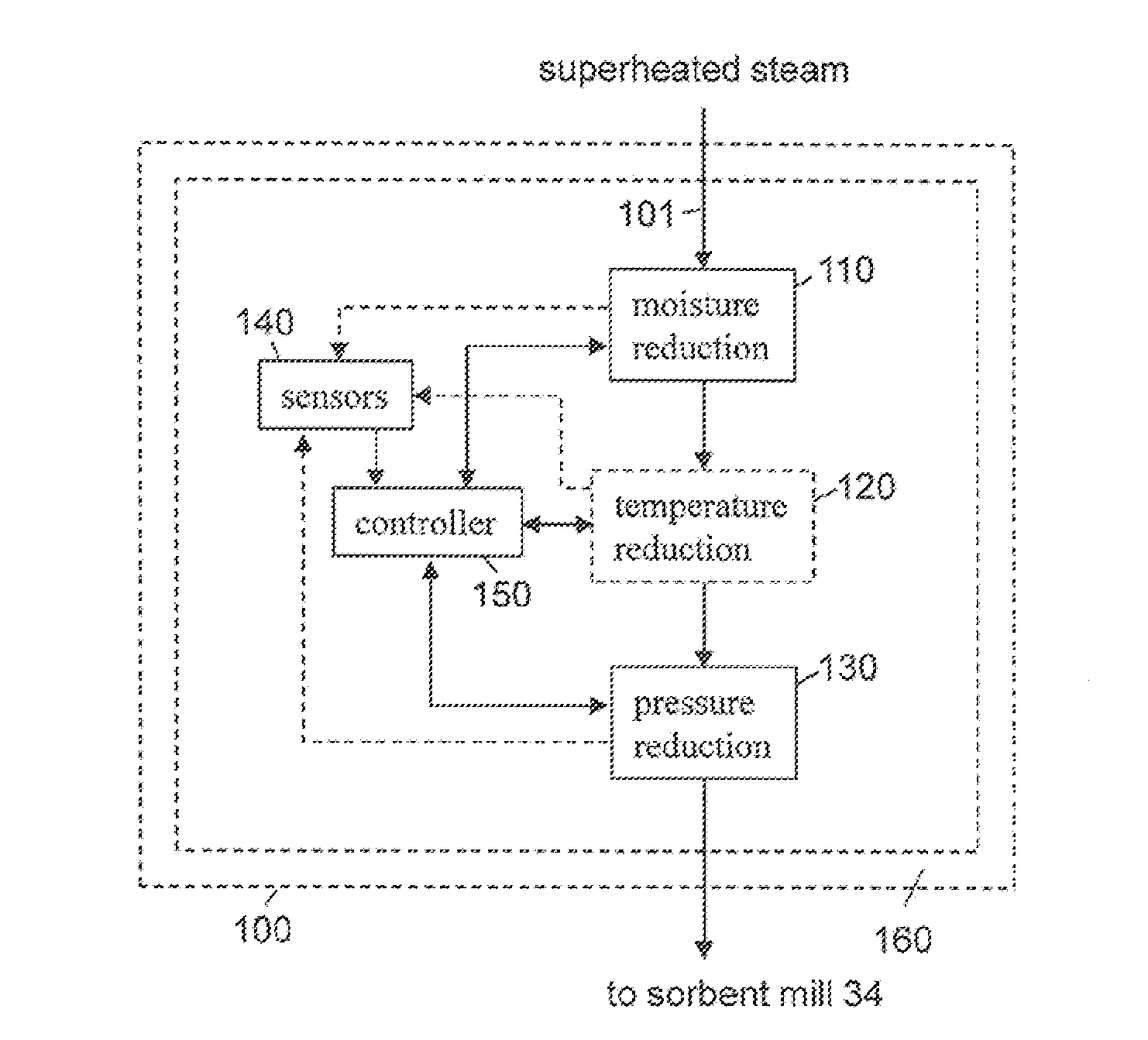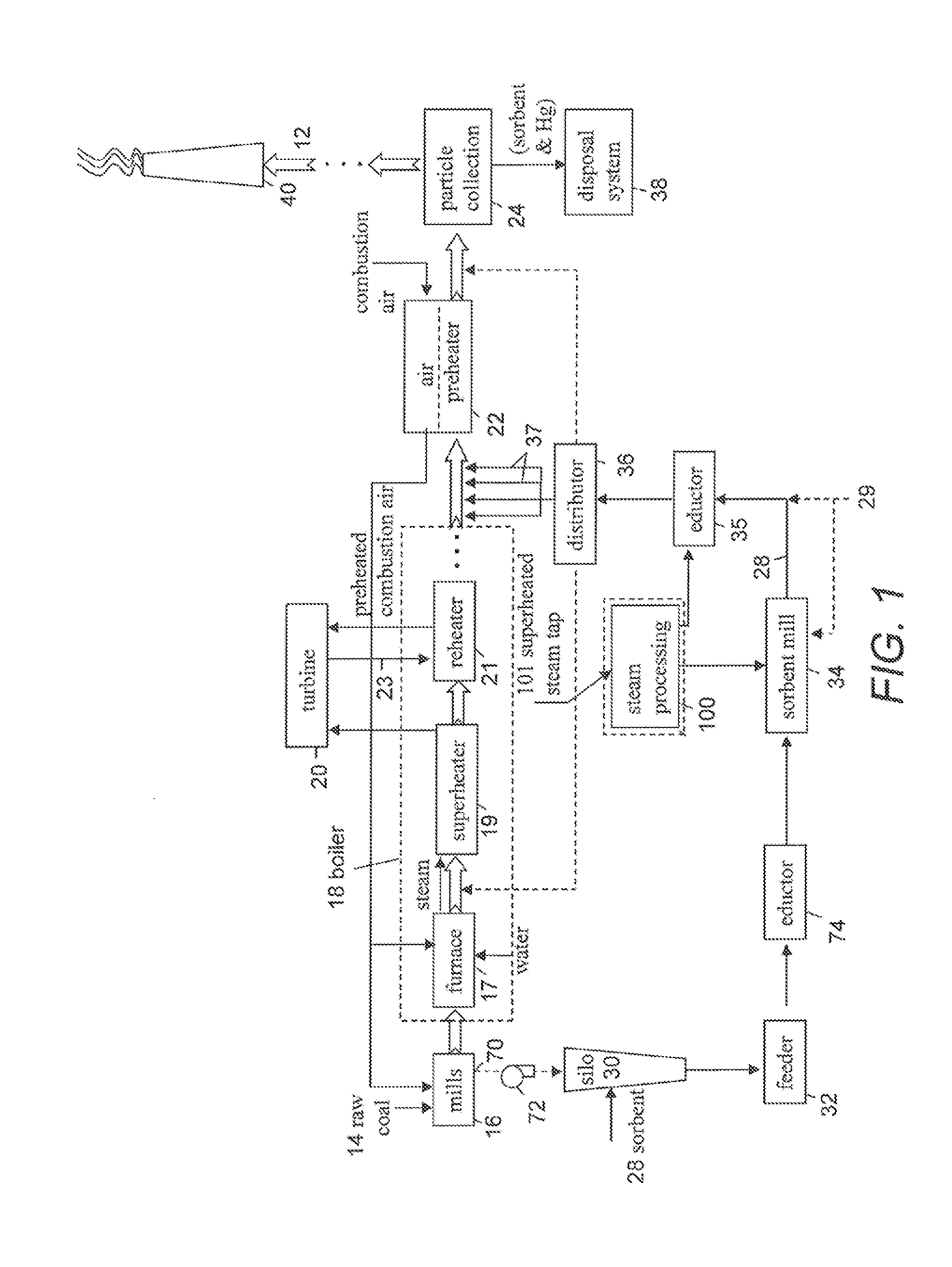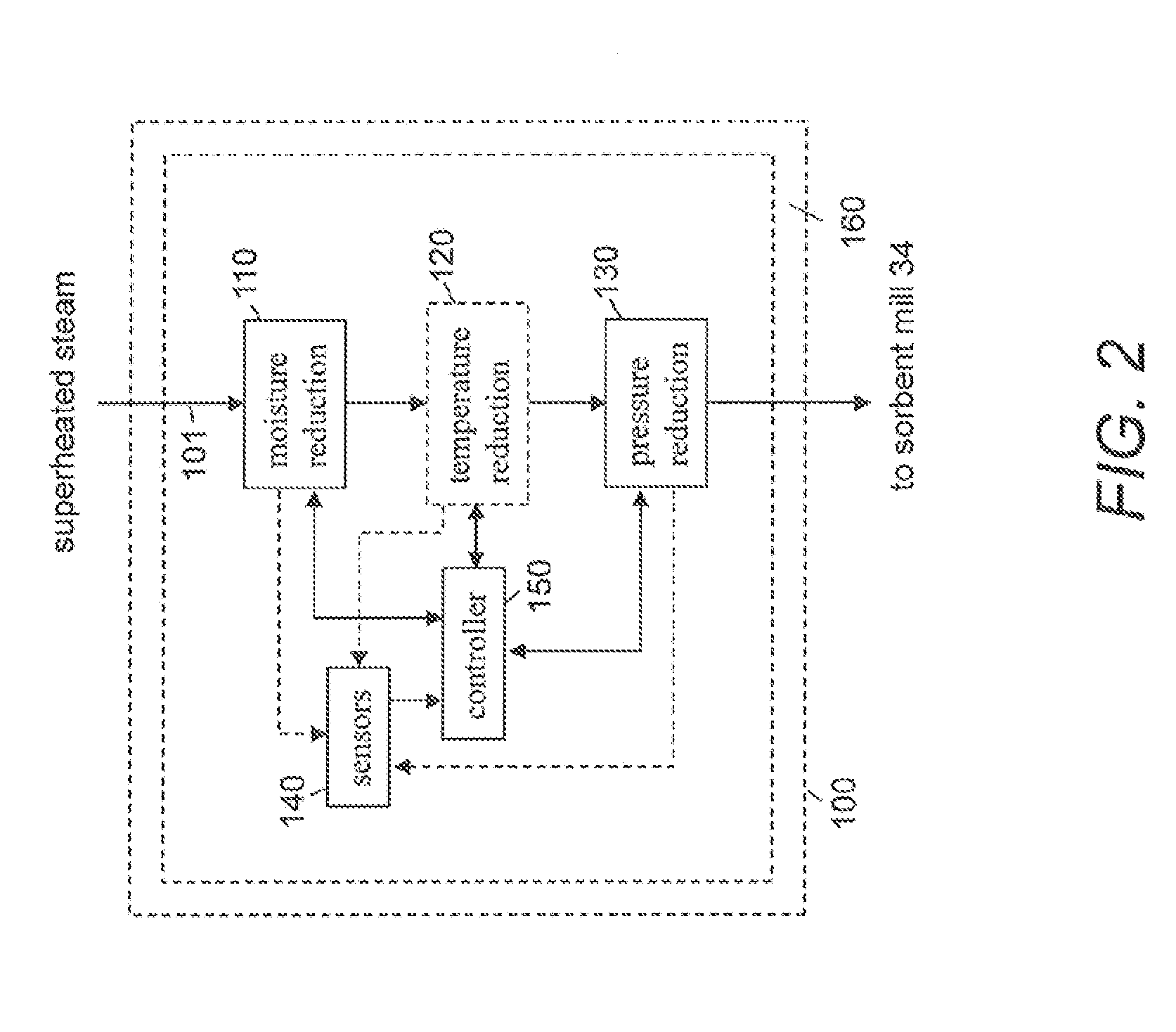Removal of mercury emissions
a technology for mercury emissions and removal, applied in the field of apparatus and methods, can solve the problems of reducing the efficiency of sorbents, so as to achieve cost-effective effects
- Summary
- Abstract
- Description
- Claims
- Application Information
AI Technical Summary
Benefits of technology
Problems solved by technology
Method used
Image
Examples
Embodiment Construction
[0031]FIG. 1 shows an embodiment of the present invention incorporated into a solid fuel fired steam generator or boiler 18. This may be part of a coal-fired power plant.
[0032]The raw coal 14 is fed to at least one pulverizer / crusher, each referred to as a mill 16 where the raw coal is reduced to desired particulate size. Ambient air is provided to an air preheater 22 that preheats the air. The preheated air is provided as primary air to the mills 16 that carries the solid fuel particles that were pulverized in mills 16, to the furnace 17 of boiler 18, where the fuel particles are burned to boil water into steam.
[0033]Air preheater 22 also provides secondary air directly to furnace 17.
[0034]The temperature of the flue gases leaving the furnace 17 ranges from 1400 to 2200° F.
[0035]The steam created in the furnace 17 is provided to superheater 19. The hot flue gases are also provided to superheater 19. The superheater transfers heat from the flue gases to the steam creating superheate...
PUM
| Property | Measurement | Unit |
|---|---|---|
| Temperature | aaaaa | aaaaa |
| Temperature | aaaaa | aaaaa |
| Temperature | aaaaa | aaaaa |
Abstract
Description
Claims
Application Information
 Login to View More
Login to View More - R&D
- Intellectual Property
- Life Sciences
- Materials
- Tech Scout
- Unparalleled Data Quality
- Higher Quality Content
- 60% Fewer Hallucinations
Browse by: Latest US Patents, China's latest patents, Technical Efficacy Thesaurus, Application Domain, Technology Topic, Popular Technical Reports.
© 2025 PatSnap. All rights reserved.Legal|Privacy policy|Modern Slavery Act Transparency Statement|Sitemap|About US| Contact US: help@patsnap.com



